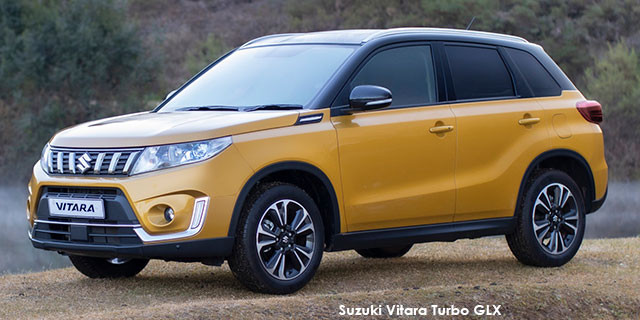Can an injection of performance from Suzuki’s Boosterjet drivetrain ignite interest in the otherwise conservative Vitara?
It’s proving to be another stellar year for Suzuki Auto South Africa. Once named CAR’s Company to Watch in the Top 12 Best Buys consumer awards, in October 2019 this Japanese manufacturer registered another month of record-breaking sales in our market.
In comparison with the quirky Ignis, Celerio and Swift city cars, the people-mover Ertiga and the reimagined Jimny 4x4, monthly sales of the brand’s boutique fourth-generation Vitara small crossover, however, have waned on the back of healthy competition in this segment and the delayed introduction of arguably this model’s most compelling drivetrain package.
Launched in 2015, the Vitara range (including an AllGrip all-wheel-drive derivative) has until recently been offered exclusively with a naturally aspirated 1,6-litre petrol engine with 86 kW and 151 N.m. Refined and a solid performer, one criticism is its lack of punch from below 4 000 r/min even before factoring in the performance penalty associated with driving at altitude.
That looks set to change. Suzuki’s 1,4-litre Boosterjet turbopetrol engine introduced in both the new Swift Sport and updated Vitara range weighs just 89 kg and incorporates the turbocharger and exhaust manifold in its cylinder head to optimise gas flow. Mated with either a six-speed manual or six-speed automatic transmission, in this crossover application the drivetrain delivers 103 kW and 220 N.m of torque – available from just 1 500 r/min – exclusively to the front wheels.
Greater than any potential fuel savings – our fuel route figure for this new derivative is 5,90 L/100 km compared with 5,70 for the 1,6-litre version – is a marked improvement in performance, specifically in-gear acceleration. Bettering the previously tested model from standstill to 100 km/h by almost two seconds, the benefit of turbocharging also sees the newer model accelerate from 80-120 km/h in fifth gear (the tallest ratio in the 1,6-litre) 13,92 seconds faster than the naturally aspirated derivative at sea level.
The two new 1,4-litre manual and automatic options are incorporated at the summit of the facelifted Vitara range, recognised via its updated headlamps and grille design. It now features vertical bumper elements as well as a revised rear. The reverse light moves from within the taillamp cluster to low down on the bumper. As GLX-badged models, these top-of-the-range derivatives include a high level of standard specification: 17-inch alloy wheels, LED daytime running lights and headlamps, auto lights and wipers, climate control, park distance control including a rear camera, and roof rails.
Despite some hard plastics, the Suzuki’s interior feels solid (the slush-moulded dashboard top is a nice touch) with GLX spec adding a 4,2-inch full-colour trip computer and seven-inch touchscreen infotainment system and smartphone mirroring software for a dose of sophistication.
All testers commented on the updated upholstery offered in the flagship GLX model. Impressively comfortable and with a good range of adjustment, the seats are trimmed in suede and faux-leather which lift an otherwise conservative-looking cabin. As before, rear passenger leg- and headroom are satisfactory for this segment and a 60:40-split backrest frees up additional packing space ahead of 288 litres worth of luggage capacity.
While a relatively low load height is a boon, the false floor storage area below the boot board is a welcome addition. The Vitara range comes standard with seven airbags (including a driver’s side knee ‘bag) and ABS-assisted brakes and stability control, carried over from the pre-facelift versions.
The overall mass of just 1 149 kg certainly helps this raised Suzuki feel sprightly around town. However, the vague, lightweight nature of the car’s electrically assisted steering needs some attention and there’s notable wind noise at cruising speeds. Still, the Vitara maintains its standing as a comfortable package that isn’t easily flustered, even while boasting 185 mm of ground clearance.
TEST SUMMARY
While “quirky”, “characterful” and “sprightly” are regularly used to describe the modern Suzuki product line-up, a vehicle like the solidly built, ticks-all-the-boxes Vitara is always going to represent a more serious side. Yet, despite a price point nearing R400 000, Suzuki’s small crossover offers good value for money with its heightened spec levels.
What’s more, the excellent new Boosterjet technology in the contemporary Vitara package may prove the catalyst for plenty more best-selling months for this popular Japanese brand.
ROAD TEST SCORE

|
Original article from Car
See Full Suzuki Vitara price and specs here









